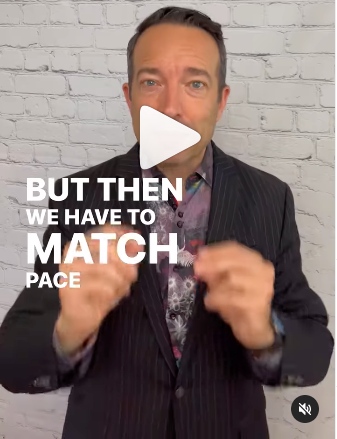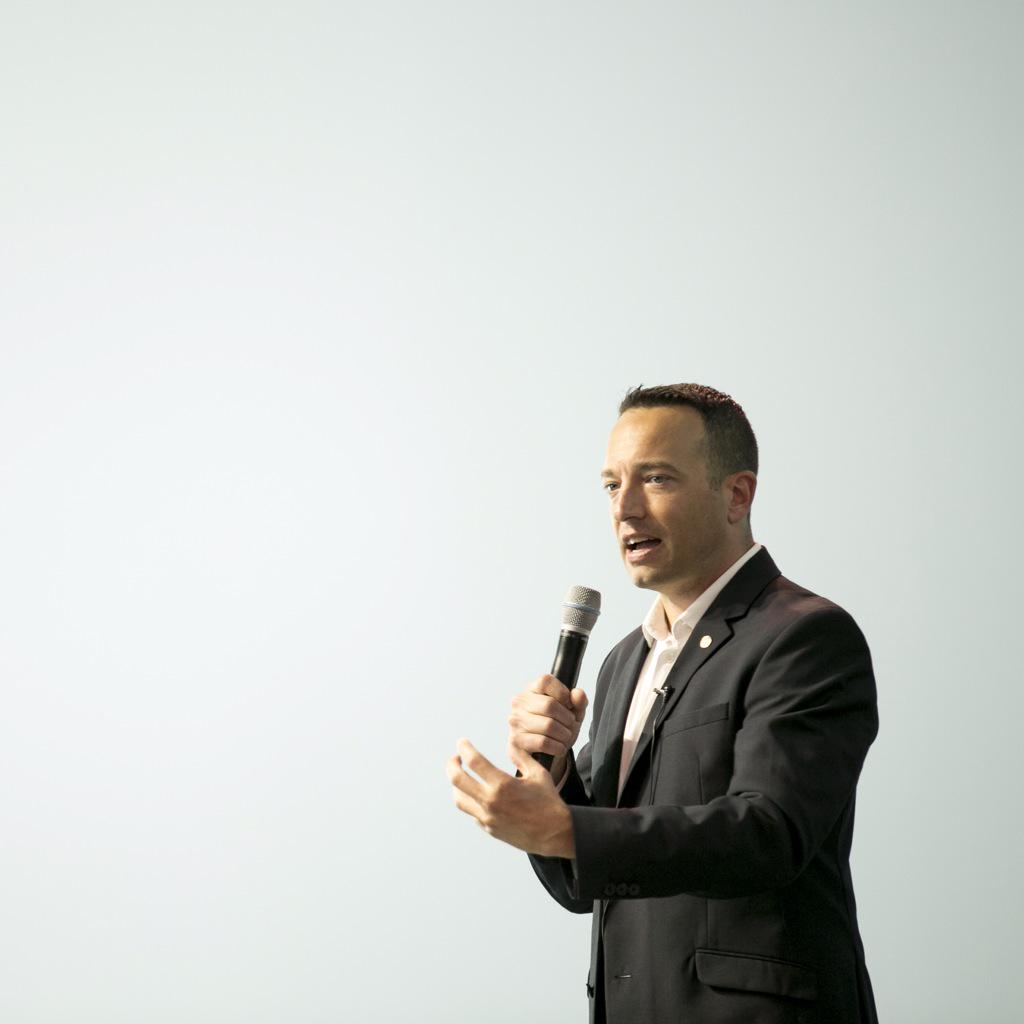Many of us in sales have been taught the importance of mirroring in sales, which involves subtly matching and mirroring someone’s body posture tonality and body language, facial expressions, speed of communications and even tone of voice. The theory is that people like to do business with people like them, and by matching and mirroring we can create rapport.
Matching and mirroring without the final step does not work.
It’s not enough to just get in sync in the sales environment, we often need to shift the energy of the meeting.
Matching and mirroring is only the first part, successful salespeople match pace and then lead. They pick up their tempo to bring up the energy in the meeting. When two people are in rapport they unconsciously will shift their physiology to stay in rapport. Physiology shifts have been scientifically proven to shift our mood and chemistry. If we just match, our client will stay where they’re at. We need to match pace and then lead in our communications, both verbally and non-verbally to succeed.
In this TikTok video Shane Gibson, keynote sales speaker and author talks about the final step in the match => mirror => pace => lead formula:
@shanegibsonlive We have all been to a seminar where we are taught matching a mirroring prospect body language as a way to gain rapport and influence. But does it really work? Sort of. #rapport #nlptechniques #salestips ♬ original sound – Shane Gibson
FAQ: Does Matching and Mirroring in Sales Work?
1. What is matching and mirroring in sales?
Matching and mirroring is a technique where sales professionals subtly mimic a prospect’s body language, tone of voice, speech pace, and facial expressions to build rapport and trust.
2. Why is matching and mirroring used in B2B sales?
People tend to feel more comfortable with individuals who are similar to them. By mirroring a prospect’s communication style and energy, sales professionals can establish a sense of trust and familiarity, making the conversation more engaging and effective.
3. Does matching and mirroring work on its own?
No. Matching and mirroring alone is not enough to close a sale. Successful salespeople match their prospect’s energy first, then lead the conversation forward to shift the energy and create momentum in the meeting.
4. What is the key to using matching and mirroring effectively?
The key is to:
✅ Match the client’s pace and tone initially to establish rapport.
✅ Gradually lead the conversation by adjusting tempo, enthusiasm, and engagement to guide the prospect toward a more positive and action-oriented mindset.
5. Why is leading after mirroring important?
Leading after mirroring helps to shift the energy of the conversation. Since physiology influences mood and decision-making, sales professionals who skillfully guide the conversation create an environment where prospects feel more confident and ready to make decisions.
6. Has science proven the effectiveness of physiology shifts in sales?
Yes. Scientific studies show that changes in body posture, tone, and energy can influence mood and chemistry. When a salesperson raises the energy in a meeting, the client unconsciously adjusts their own energy levels, leading to a more productive and engaging conversation.
7. How can sales professionals apply matching, mirroring, and leading in real sales conversations?
- Step 1: Observe the client’s body language, tone, and speech pattern.
- Step 2: Subtly match their communication style to establish trust.
- Step 3: Gradually lead the conversation forward by increasing enthusiasm, confidence, and energy to create momentum and engagement.


